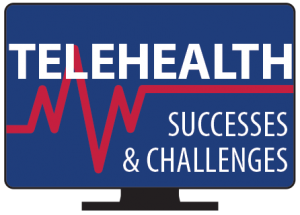 By Mary Jo Fidler, MD
By Mary Jo Fidler, MD
Posted: June 10, 2020
Healthcare systems in the United States have been slow to adopt telehealth, in part, due to regulatory limitations, patient privacy concerns, and less reimbursement potential.1 However, at the same time, there has been an enormous effort to incorporate electronic health records (EHR) driven by programs such as Meaningful Use by the Centers for Medicare & Medicaid Services (CMS) EHR Incentive Program. Prior to the COVID-19 pandemic, the World Health Organization saw the potential of digital health to extend “the scope, transparency, and accessibility of healthcare” and also saw its potential for accelerating innovation and efficiency.2,3
With access to care limited by the COVID-19 pandemic, regulatory restrictions have been eased in the United States, although several federal and state agencies, as well as regulatory boards are involved including CMS, the Department of Health and Human Services, the Office for Civil Rights (OCR), and the Office of the Inspector General. Particularly important, the OCR will not impose penalties for noncompliance with the Health Insurance Portability and Accountability Act (HIPAA) provided that telehealth is provided in good faith and that public facing platforms like Facebook Live™ are not used for the communication.4 Regulations continue to evolve and may change by state.
Specific benefits to providers and patients in a COVID-19 pandemic are numerous. These include enabling families to participate while a zero-visitor policy is in place, eliminating the need to touch identifying documents with electronic registration and document uploading, the potential to incorporate e-forms for compliance standards such as distress screening, and patient-completed medication reconciliation while checking in electronically. Potential health benefits also include screening for infectious symptoms prior to the patient presenting to the medical center and reducing potential medical center exposure for patients who may have symptom toxicities that would not allow for planned scheduled therapy.
The low use of virtual visits prior to COVID-19 does not seem to be associated with usability issues nor patient dissatisfaction.5 In a study of virtual urgent care center visits, satisfaction surveys showed patients were most often very satisfied. Within the Rush University Medical Group in Chicago, initial surveys from the first 314 responders had 79.6% of patients rating the visit a 9 or 10 out of 10, with only 7.6% of patients rating the experience a 6 or lower on the same scale.
In conclusion, with the foundation that early adaptors of telehealth laid and a loosening of restrictions due to the COVID-19 pandemic, the time is right for the expansion of telehealth in oncology. For the moment, it is an opportunity to keep our patients and healthcare providers safe while maintaining provider– patient relationships. In the future, a gradual shift in regulations may allow for expansion of telehealth as a value-based service that may play a bigger role in models of cancer care delivery. ✦
About the Author: Dr. Fidler is an associate professor in the Department of Internal Medicine at Rush Medical College. She is a member of the IASLC Communications Committee and the ILCN Editorial Group.
References:
1. Flannery D and Jarrin R. Building A Regulatory And Payment Framework Flexible Enough To Withstand Technological Progress. Heath Affairs. 2018;37(12):2052-2059.
2. Jones M, DeRuyter F, Morris J. The Digital Health Revolution and People with Disabilities: Perspective from the United States. Inter J Environmental Research and Public Health. 2020;17(381):1-10.
3. World Health Organization. From Innovation to Implementation: eHealth in the WHO European Region. Published 2016. Accessed May 7, 2020. http://www.euro.who.int/__data/assets/pdf_file/0012/302331/From-Innovation-to- Implementation-eHealth-Report-EU.pdf.
4. U.S. Department of Health and Human Services. Notification of Enforcement Discretion for Telehealth Remote Communications During the COVID-19 Nationwide Public Health Emergency. Updated March 30, 2020. Accessed May 7, 2020. https://www.hhs.gov/hipaa/for-professionals/special-topics/emergency-preparedness/notification-enforcement-discretion-telehealth/index.html.
5. Sterling R and LeRouge C. On-Demand Telemedicine as a Disruptive Health Technology: Qualitative Study Exploring Emerging Business Models and Strategies Among Early Adopter Organizations in the United States. J Med Internet Res. 2019;21(11):e14304.











